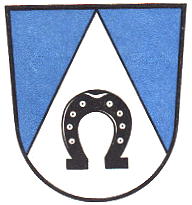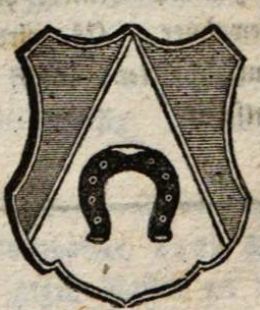Bobingen: Difference between revisions
Knorrepoes (talk | contribs) m (Text replacement - ". ===Origin/meaning===" to ". |- |'''English''' | {{blazon wanted}} |} ===Origin/meaning=== ") |
Knorrepoes (talk | contribs) m (Text replacement - "===Official blazon=== *(de) " to "{| class="wikitable" |+Official blazon |- |'''German''' | ") |
||
| Line 8: | Line 8: | ||
[[File:bobingen.jpg|center|Wappen von {{PAGENAME}}]] | [[File:bobingen.jpg|center|Wappen von {{PAGENAME}}]] | ||
= | {| class="wikitable" | ||
|+Official blazon | |||
|- | |||
|'''German''' | |||
| | |||
In Blau eine silberne Spitze, darin ein schwarzes Hufeisen. | |||
|- | |- | ||
|'''English''' | |'''English''' | ||
Revision as of 07:51, 5 July 2022
This page is part of the German heraldry portal Deutsche Wappensammlung |
Heraldry of the World |
|
German heraldry:
|
Selected collector's items from Germany:
|
BOBINGEN
State : Bayern
District (Kreis) : Augsburg (until 1973 Schwabmünchen)
Additions: 1972 Reinhartshausen, Straßberg; 1975 Kreuzanger (partly), Waldberg
| German |
In Blau eine silberne Spitze, darin ein schwarzes Hufeisen. |
| English | No blazon/translation known. Please click here to send your (heraldic !) blazon or translation |
Origin/meaning
The arms were officially granted on September 29, 1837.
The arms first appear on a seal from the early 19th century. The horseshoe is probably the village symbol. In 1768 Clemens Wenezclaus, Bishop of Augsburg summoned all villages to use a specific village sign for border stones etc. Why a horseshoe was chosen is not known. In 1837 the Bavarian colours were added to the horseshoe.
| The arms in Kramer (1841) |
Contact and Support
Partners:
Your logo here ?
Contact us
© since 1995, Heraldry of the World, Ralf Hartemink 
Index of the site
Literature : Stadler, 1964-1971, 8 volumes.













